Are you wondering if the cats train you, or you train them? Is it a mythe that you can train a cat? I don’t think so! With positive result I am able to get my cats to do what I want. In this article I will explain and show how a training looks like.
Ben je opzoek naar het Nederlandse artikel? Die kan je hier vinden.
How does an, almost fully, trained cat look like with a harness? Here’s a short video of one of our trainings. Read further below on how we achieved this (including photos)!
Basic training
Your cat will probably not do something on his own if he does not like it. Or if there is no advantage for him. So the trick is to find something he really likes. For dogs a reward is also a pet on the head, but unfortunately our cats have not yet accepted that as reward…
The key to training a cat is patience, reward and repetition.
Our cats were 4 months old when we started their training. It began with finding the treat that they will do something for. We give ‘Snackies’ which is dried meat or fish. First flavour (tuna) is already a hit so they are willing to do something to get one of those. Basic training was learning to go in the travel basket. It’s a “skill” that we want to teach them, because they will use that the rest of their lives. A lot of cats and cat owners are stressed when the cat has to go in his travel basket. If we can make that situation enjoyable, it will mean a lot less stress for both parties. And which as a result directly influences their health in a positive way. I’ll add an article about that later. In general the key to a successful training is patience, reward and repetition.
Training with a harness
After successful travel basket training they were able to enjoy a bike ride with us on regular basis. On to the next training, which is wearing a harness because we want that to be a enjoyable experience too.
Based on different articles and video’s, I decided to take very small steps with them. It started with looking for a harness that is easy to hold with one hand. So I have one free hand to lure them with a treat. It also has to be a comfortable harness, because… Well why not? We ended up buying a Tre Ponti harness. It’s original an Italian brand, but they have one specific model that can also be used for cats (Liberta). I’ve written an article about that specific harness, sizing and our experience with it here.
Step-by-step plan
After some researching I created the following step-by-step plan for me to train our cats to wear a harness.
- Nearby – put the harness near the cat
- Harness on the cat – put the harness on the back or side of the cat while they lie calmly
- Walk through the harness – make a circle from the harness and lure them through it
- Stand in the harness – lure them through the harness but reward it if they stand still with the harness at the height of their belly. If they don’t stop by themselves, use your hand to stop them without touching them.
- Stand in the harness with the harness in the right spot – for our harness the front paws have to be through the “hole”
- Lift the harness against the belly – so they get used to the feeling
- Put some pressure on the harness – put a little bit more pressure so they get used to the pressure around their belly and back
- Close the harness – close it very shortly, a second, and open it again
- Close the harness longer – have it closed a little bit longer every time, but open it and reward them before they are irritated
- Roll out the line – so the cat get used to having something “hang” on the harness
- Motivate the cat to walk – most cats will lay on the floor when a harness is put on and closed. Put a treat in between their paws and put every next treat a little bit further away. Just out of reach.
- Play with the harness on – play with a toy so the cat doesn’t play with the harness or line and stimulate them to walk
- Go outside with the harness on – move to this step if all the steps above are done with confident and without irritation
Reward the cat
At every step we reward good behaviour. I define good behaviour as staying calm, not playing with the harness, not act out or get scared. Every day I practised 2 or 3 times per cat and one step will take a few days to master. One practise was 2 repetitions so: put the harness on, reward, remove harness, put the harness on, reward, remove, done. It is better to practise often and short than long and occasionally because your cat, and especially a kitten, has a short attention span.
My experience when the cat is able to wear the harness, is that a toy that you can drag across the ground works best to stimulate them to walk. A small ball doesn’t work as well. Use some rope, a feather on a line etc. If the cat really does not want to walk and just “sags” when you lift him, try lifting him and putting him on his paws yourself. Distract him with a toy, he will probably forget that he is wearing the harness and chase the toy.
Photos from a training
So to make this a bit more clear I’ve taken photos from our cats during a training.
Do you also train your cats? Does your cat walk on a harness? What else have you been able to teach him? Does this step-by-step plan helps you out?
♡ – Vivianne
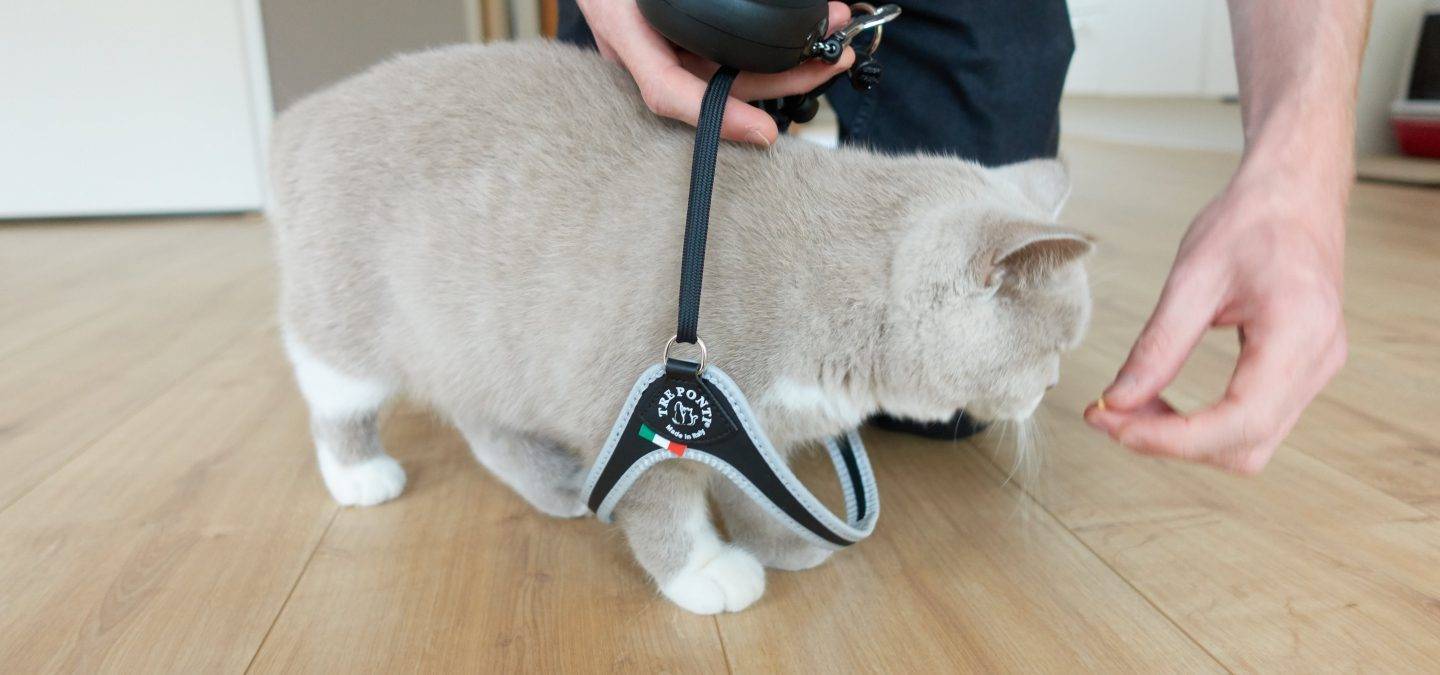
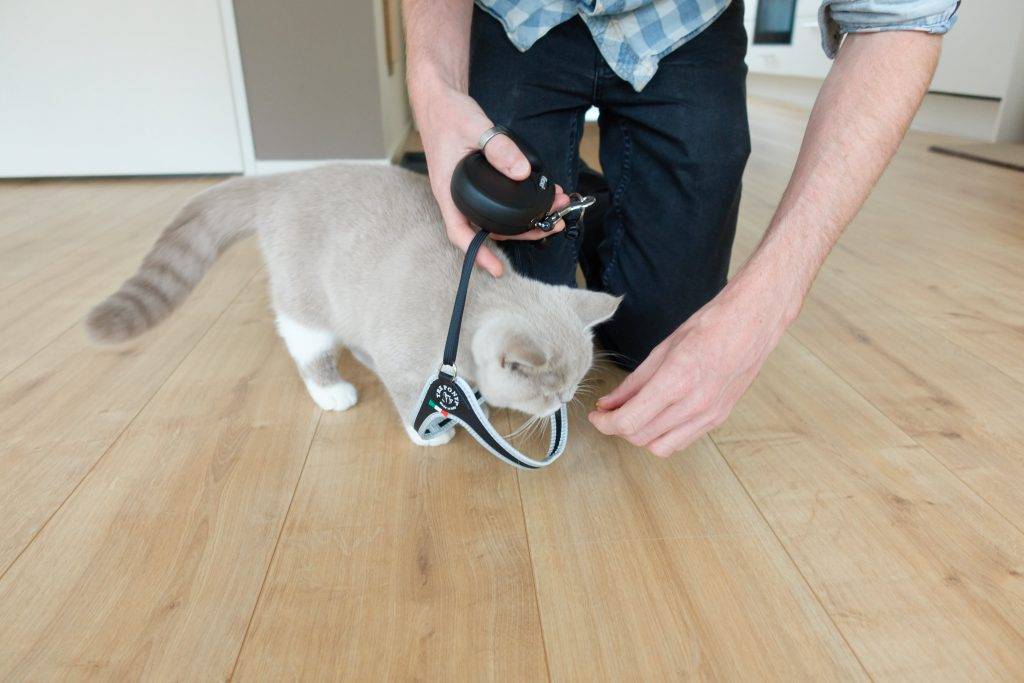
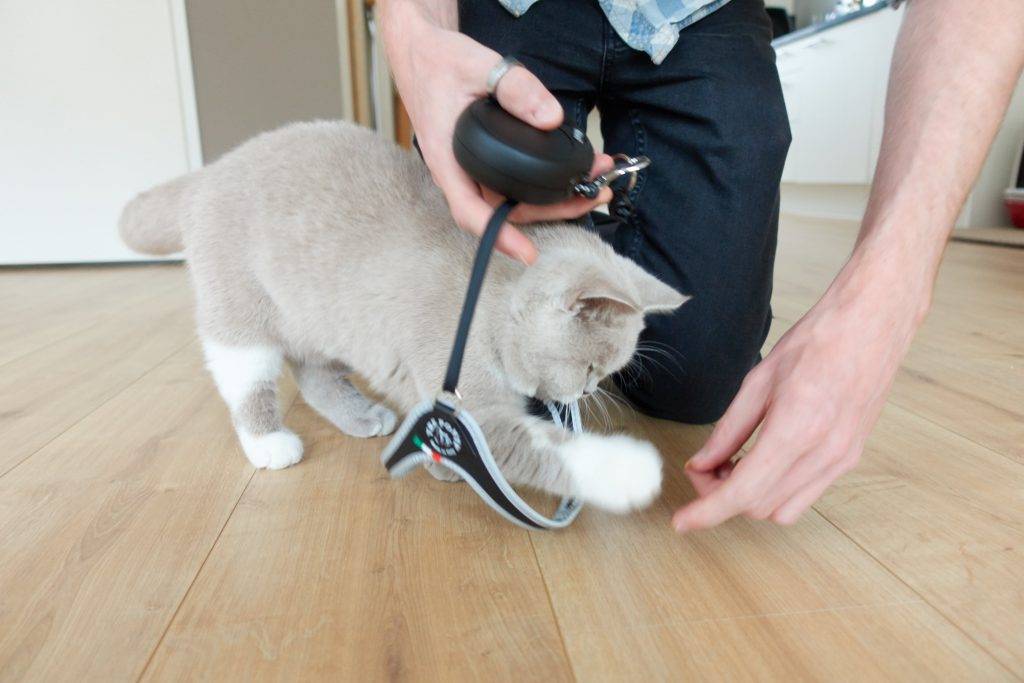
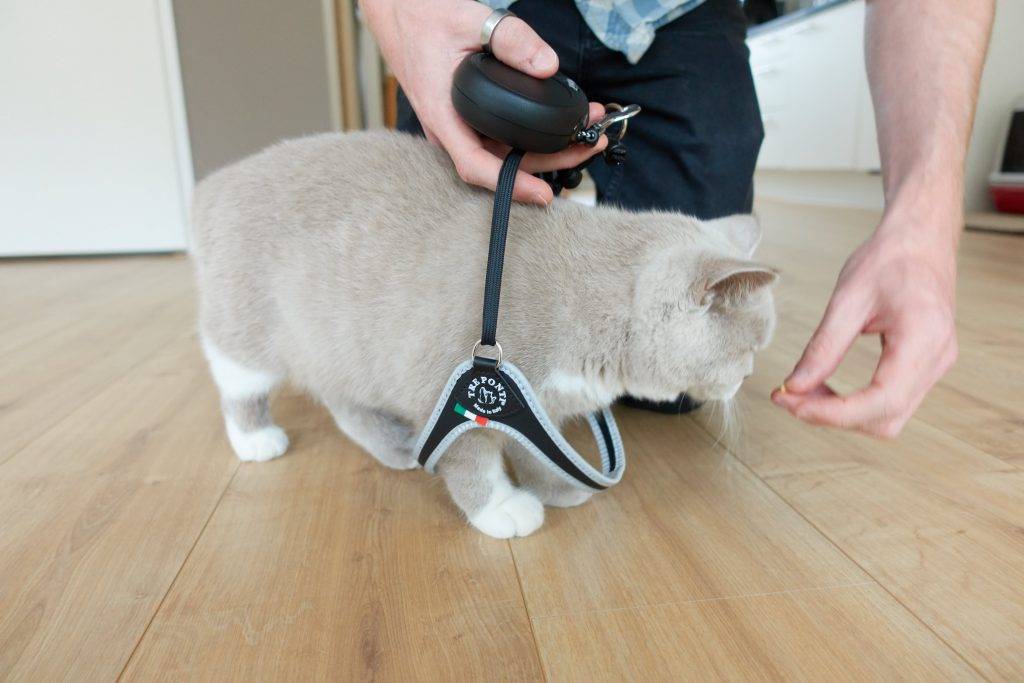
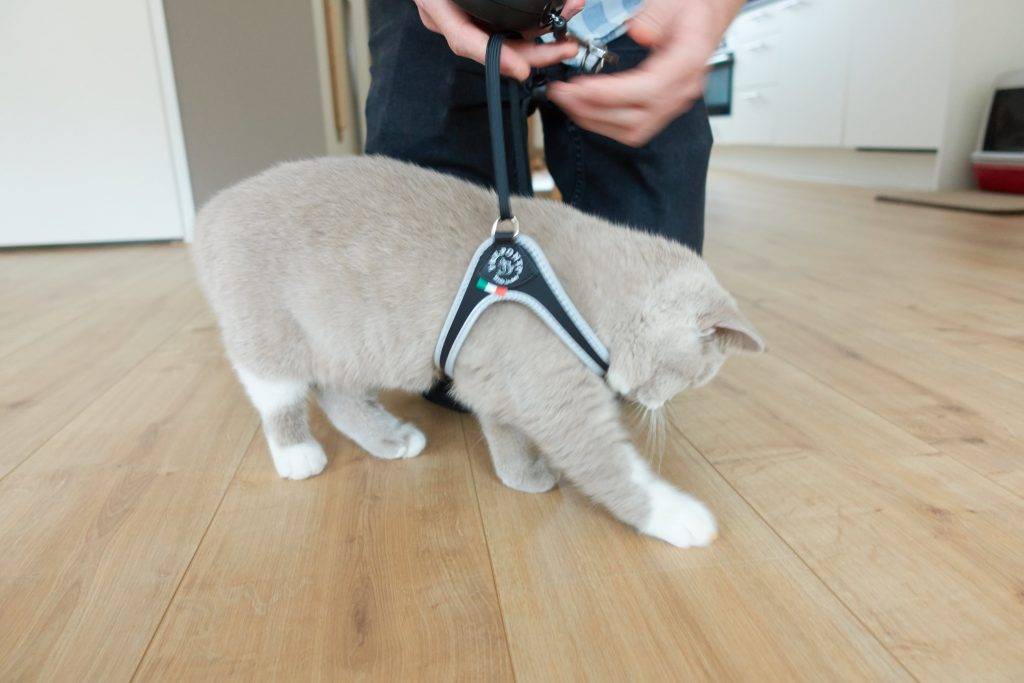
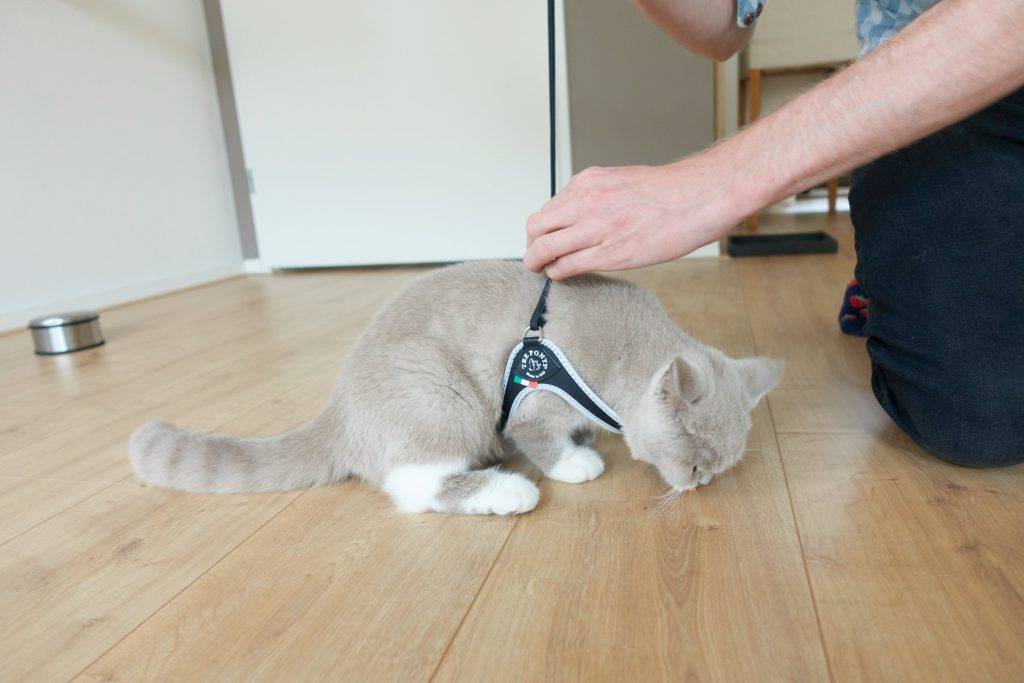
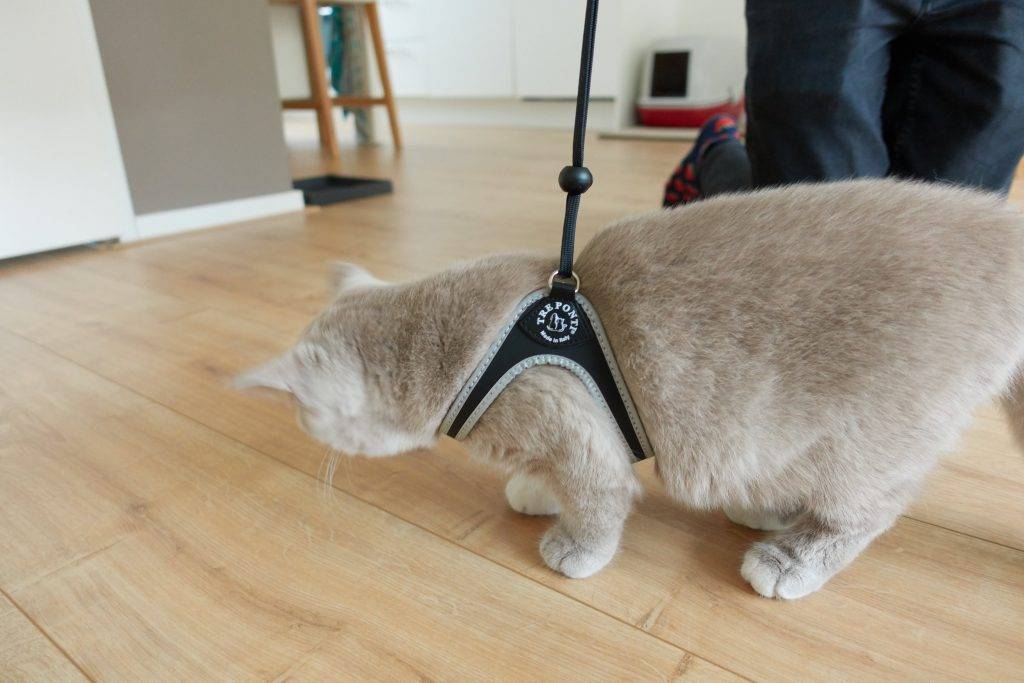
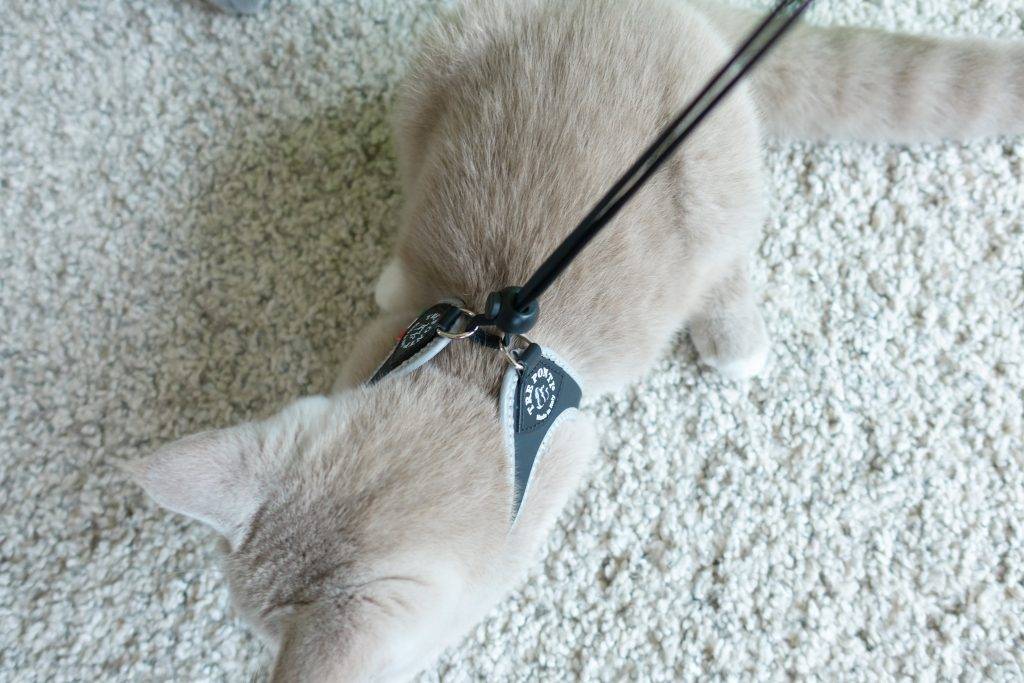
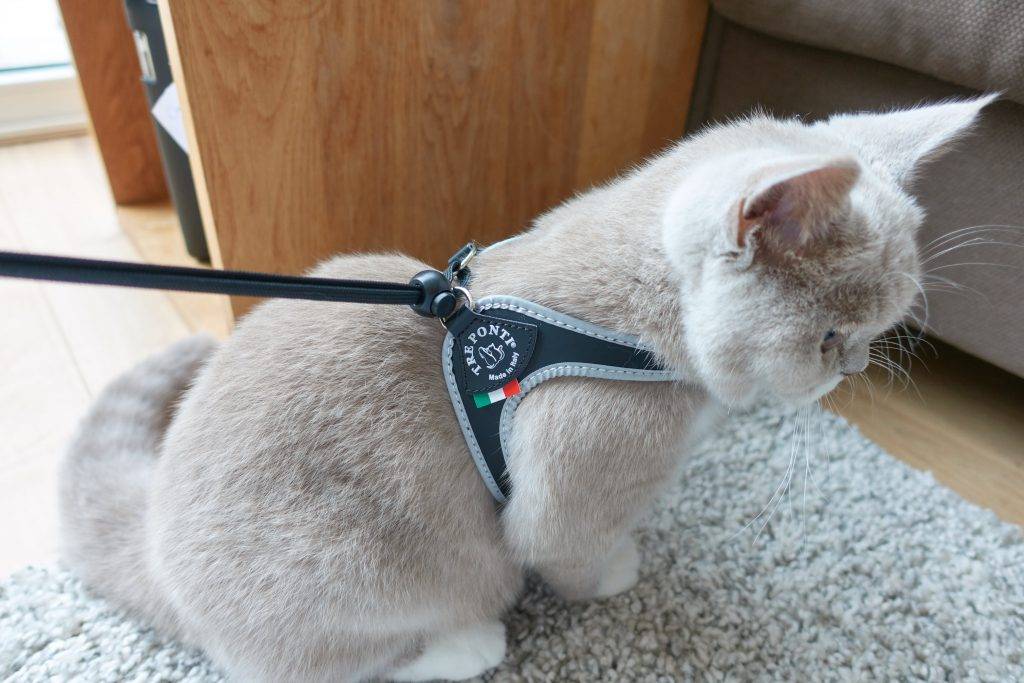
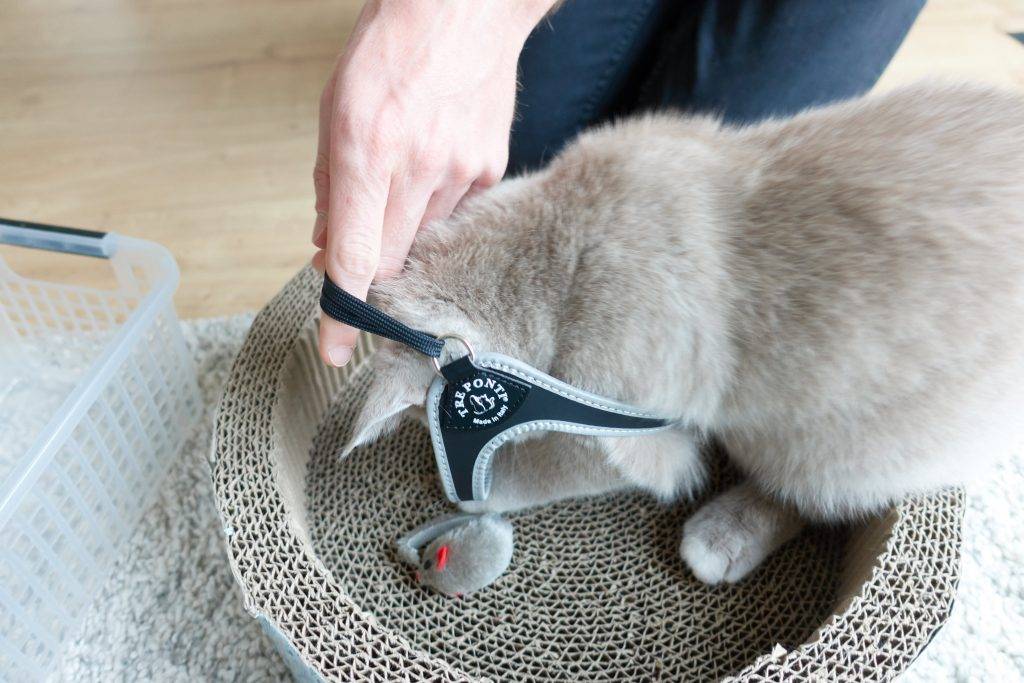
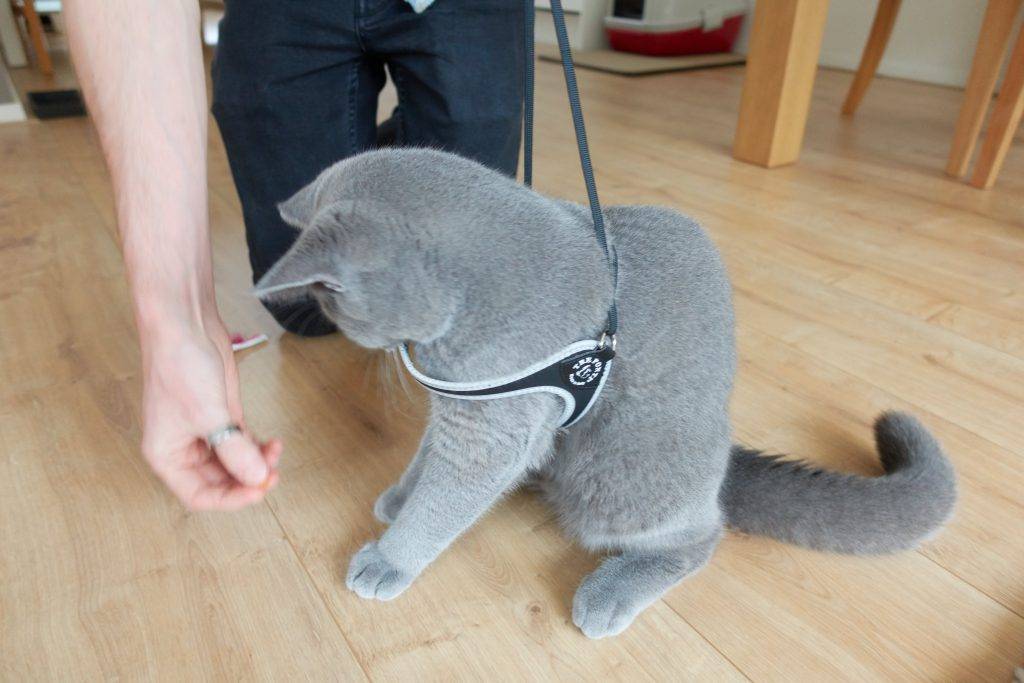
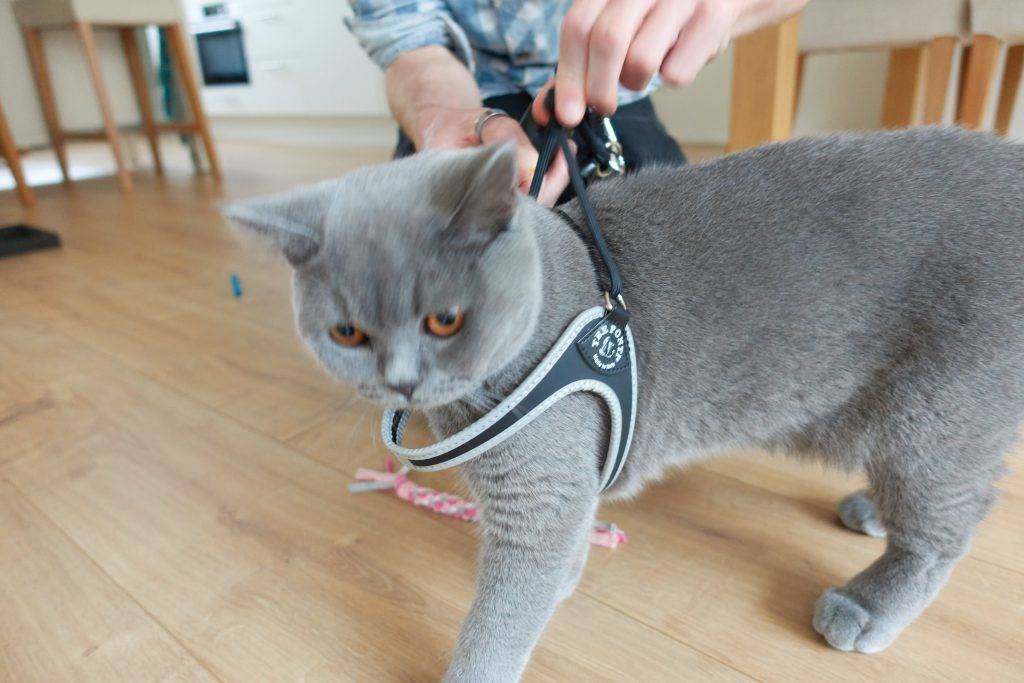
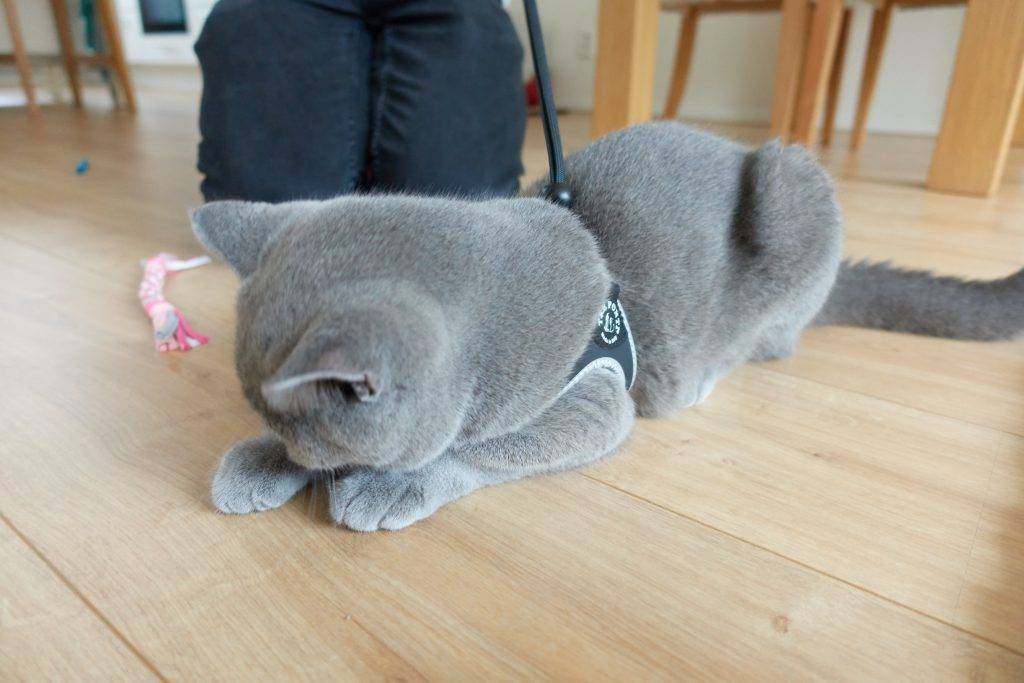
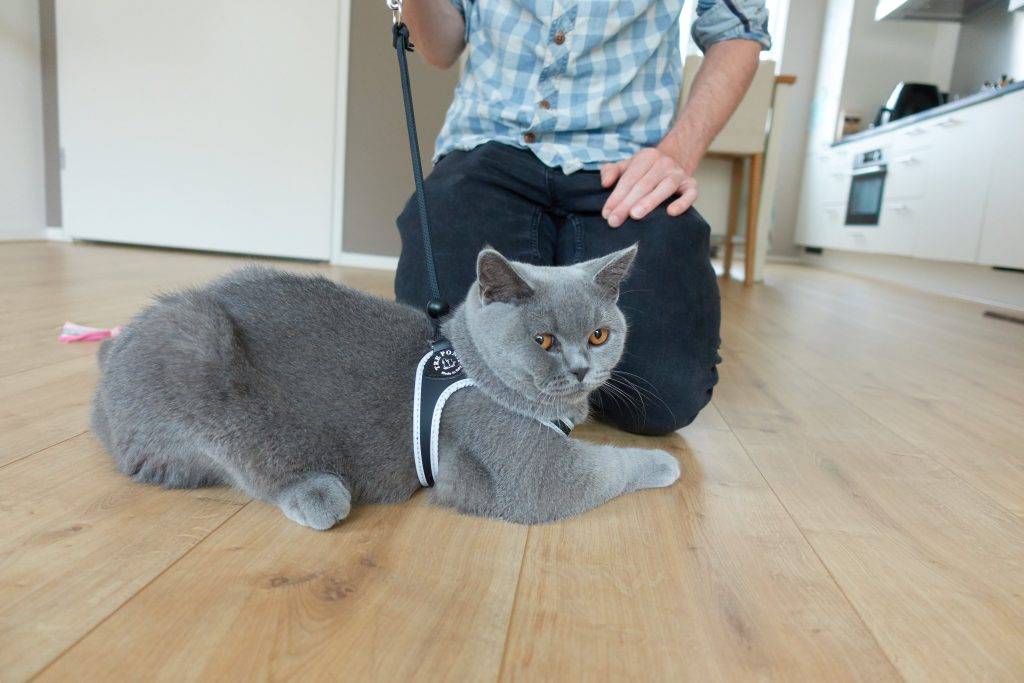


2 reacties
Hello Vivianne,
We are Tre Ponti USA, the North American Distributor for the Tre Ponti brand! We came across your training page and like the fact that you are using the Tre Ponti Liberty Strap harness to train cats to walk with a harness on 🙂 We find that your videos are informative and would like to ask your permission to post your videos and training tips on our website.
We look forward to hearing from you
Our best
Tre Ponti USA team
Hi! Thank you! You have my permission to post the videos and training tips, but please do so with a link back to my article as the original source 🙂
Thanks in advance and have a great day!
– Vivianne